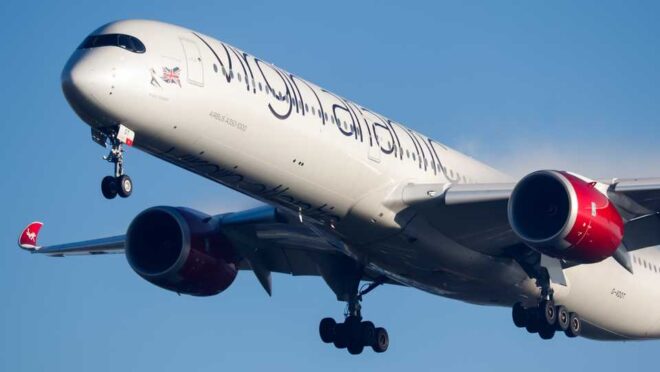
A routine transatlantic flight transformed into a high-stakes emergency when Virgin Atlantic Flight 138 was compelled to make an unscheduled landing at Boston’s Logan International Airport due to a cabin fire. The incident underscored the potential hazards associated with personal electronic devices on aircraft and highlighted the critical importance of swift crew response in ensuring passenger safety.
Flight Details and Initial Departure
Virgin Atlantic Flight 138, an Airbus A330-300, departed from New York’s John F. Kennedy International Airport (JFK) at approximately 8:00 PM EDT, destined for London’s Heathrow Airport (LHR). Onboard were 217 passengers and a full complement of crew members, all anticipating a standard overnight journey across the Atlantic.
Onset of the Incident
Approximately 25 minutes into the flight, passengers and crew detected smoke emanating from the cabin. The source was identified as a passenger seat in the first-class section, where flames had become visible. The cabin crew acted promptly, utilizing onboard fire extinguishers to suppress and control the fire, thereby preventing its spread to other parts of the aircraft.
Emergency Diversion to Boston
In light of the fire, the flight crew declared an emergency and coordinated with air traffic control to divert the aircraft to the nearest suitable airport. Boston’s Logan International Airport (BOS) was selected due to its proximity and capability to handle such emergencies. The aircraft landed safely in Boston at approximately 8:50 PM EDT, less than an hour after its departure from New York.
Passenger Experiences and Reactions
The sudden emergence of smoke and subsequent emergency landing elicited a range of reactions from passengers. Cory Tanner, a passenger on the flight, recounted the sequence of events:
> “The firefighters were loaded on before we could get off. People were definitely nervous just because we didn’t know what it was.”
Another passenger, Jerry Knopf, expressed concerns about the airline’s handling of the situation post-landing:
> “Things are so bad that four state troopers have shown up… [The airline] has handled it poorly, they just have no emergency plan. Nothing.”
Investigation into the Cause
Upon landing, the Massachusetts State Police’s Explosive Ordnance Disposal Unit examined the affected area. Their preliminary investigation suggested that the fire originated from an external phone charger battery pack that had become lodged between seat cushions. The device appeared to have overheated, leading to ignition.
Airline Response and Passenger Accommodations
Virgin Atlantic issued a statement acknowledging the incident and emphasizing their commitment to safety:
> “The VS138 from JFK to London Heathrow (4 July 2019) diverted to Boston due to reports of smoke in the cabin. Our crew responded immediately and the plane has landed safely in Boston. The safety and security of our customers and crew is always our top priority, and we are currently investigating to fully understand the circumstances.”
The airline worked to provide accommodations for the affected passengers, including local lodging and rebooking on alternative flights to their final destinations.
Regulatory Guidelines on Electronic Devices
The incident brought to the forefront existing regulations concerning the use and storage of personal electronic devices (PEDs) on aircraft. Aviation authorities, including the Federal Aviation Administration (FAA), have established guidelines to mitigate risks associated with lithium-ion batteries commonly found in devices such as smartphones, tablets, and external chargers. Passengers are generally advised to:
Keep PEDs in carry-on baggage rather than checked luggage.
Avoid charging devices unattended or during critical phases of flight (takeoff and landing).
Ensure devices are not damaged or defective before bringing them onboard.
Industry Response and Safety Measures
In the aftermath of the incident, airlines and regulatory bodies revisited safety protocols related to PEDs. Emphasis was placed on:
Crew Training: Enhancing training programs to ensure cabin crew can effectively respond to in-flight fires, particularly those originating from electronic devices.
Passenger Education: Increasing efforts to inform passengers about the safe use and storage of electronic devices during flights.
Device Approval: Encouraging manufacturers to seek aviation-specific certifications for electronic accessories intended for in-flight use.
Conclusion
The emergency landing of Virgin Atlantic Flight 138 serves as a critical reminder of the potential dangers posed by personal electronic devices on aircraft. The incident highlighted the effectiveness of prompt crew response and the importance of adhering to safety guidelines concerning electronic devices. As technology continues to evolve, the aviation industry must remain vigilant in updating safety protocols to protect passengers and crew alike.